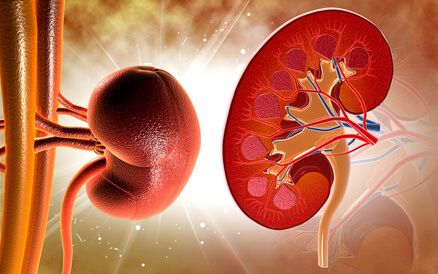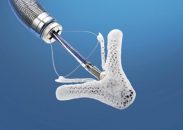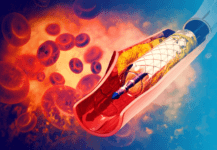Hypertension treatment has evolved considerably over time. However, managing adverse events driven by medication is still challenging, as is low patient adherence, be it because of polimedication or associated costs. Approximately 10% of patients do not reach optimal blood pressure targets, despite adherence optimal medical treatment (OMT); this condition is known as resistant hypertension. Renal…
Myocardial Damage in MAC
Mitral annulus calcification (MAC) affects between 8% and 23% of the population. It is more common in women and patients with renal insufficiency. This phenomenon is characterized by an increase in valvular annulus fibrosis, which can extend and affect the leaflets. The presence of MAC is associated with valve regurgitation or stenosis, increasing mortality and…
Initial Complete Revascularization vs. Staged Revascularization in Patients with STEMI and Multivessel Disease
In patients with ST-segment elevation acute myocardial infarction (STEMI) undergoing primary percutaneous coronary intervention (primary PCI), multivessel disease is observed in up to 40% of cases. The optimal timing for revascularizing non-culprit lesions in these patients without cardiogenic shock remains a controversial issue. European guidelines recommend completing revascularization during the initial procedure or within 45 days…
Revascularization Timing in Acute Coronary Syndrome
Multivessel disease is often present in ST elevation acute myocardial infarction (STEMI) patients. The AHA/ACC 2021 revascularization guidelines recommend staged complete revascularization as class I, single-setting complete revascularization as class 2b, and recommend against culprit only revascularization. At present, we have more randomized studies (BIOVASC, FIRE and MULTISTAR) comparing staged vs single-setting complete revascularization, but…
ULTIMATE III: Use of IVUS for Coronary De Novo Lesion Drug Coated Balloon Angioplasty
Percutaneous coronary intervention (PCI) with drug eluting stents (DES) can present limitations, especially in the form of stent thrombosis or instent restenosis (ISR). These findings have furthered the development of drub coated balloons (DCB). The safety and efficacy of DCB have already been shown in the context of ISR and de novo small vessel coronary…
Intravascular Lithotripsy: Outcomes and Trends in the Treatment of Calcified Coronary Lesions
Lately, the complexity of percutaneous coronary artery interventions (PCI) has seen an increase, mainly driven by the increasing prevalence of coronary lesion calcification, which represents a significant challenge for interventionists. Untreated calcification might result in insufficient stent expansion, a high risk factor of thrombosis and instent restenosis. Historically, several devices have been used to treat…
Edge-to-Edge Repair for Right Ventricular Function Deterioration
Tricuspid regurgitation (TR) has been associated with worse survival and hospitalization for cardiac failure (CF). The current guidelines recommend surgery as treatment, despite its 8 – 15% 30-day mortality rate. And there is no mention of a transcatheter intervention, especially for patients with severe TR and right ventricular deterioration. Several percutaneous intervention devices have recently…
Evolution of Cardiac Damage in MitraClip
Degenerative mitral valve regurgitation affects the mitral apparatus and is related to severe insufficiency. At present, surgery is the treatment of choice for patients at low risk. Oftentimes, this disease affects the elderly and/or those at high surgical risk, edge-to-edge repair being an excellent treatment alternative. We all know that the different stages of ventricular…
Predictors of DCB Failure in De Novo Lesions
Percutaneous coronary intervention (PCI) with drug coated balloons (DCB) is a viable alternative, especially in patients at high risk of bleeding, side-branch lesions in coronary bifurcation, or in small coronary segments. De novo heart disease treated with DCB has been shown non-inferior to conventional DES stenting, according to the PICCOLETO-II trial. However, these interventions are…
Prehospital Crushed vs. Integral Prasugrel in STEMI Patients with Large Myocardial Area at Risk
Timely percutaneous intervention of STEMI patients effectively reduces MI size and mortality, which currently makes it the first line of treatment. A fundamental aspect is activation and platelet aggregation, which is why, in addition to creating networks to optimize STEMI treatment, prehospital drug treatments have been implemented. The COMPARECrush looked at whether early and powerful…









